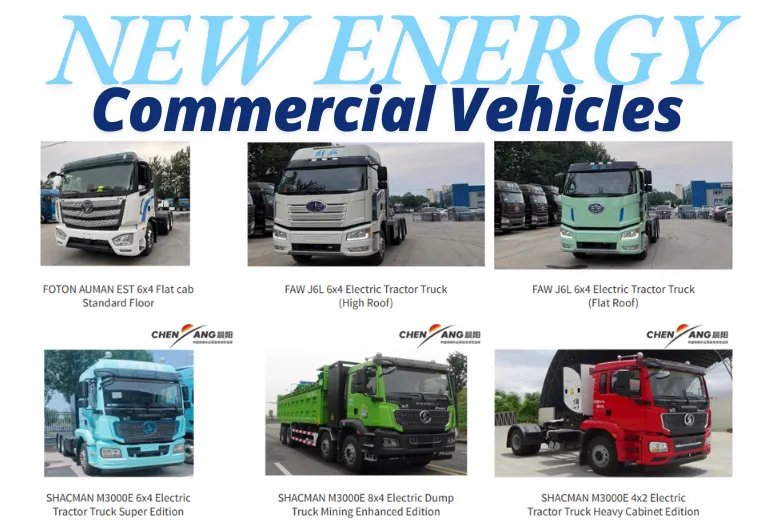The Rise of Commercial Electric Vehicles (EVs) in the Global Market
In recent years, the global market for commercial electric vehicles (EVs) has surged, driven by technological advancements, environmental pressures, and shifting consumer preferences. What was once a niche market focused on personal transportation has now become a thriving industry with far-reaching implications for business operations, urban mobility, and environmental sustainability. Commercial EVs, from electric delivery vans to heavy-duty trucks, are redefining the way goods and services are transported worldwide. This article explores the key factors behind the rise of commercial EVs, their impact on various industries, and the challenges that remain in realizing their full potential.

A Paradigm Shift in Commercial Transportation
The transition to commercial ev vehicles in the commercial sector is being propelled by a combination of economic, regulatory, and environmental forces. Businesses across industries are increasingly adopting electric fleets as part of their sustainability strategies. Electric commercial vehicles, such as cargo vans, buses, trucks, and even specialized vehicles, offer significant cost advantages over their traditional internal combustion engine (ICE) counterparts, particularly in terms of lower fuel and maintenance costs.
The global push toward reducing carbon emissions and the growing demand for cleaner, more sustainable solutions have been key motivators for governments and corporations alike to accelerate the adoption of electric vehicles. In many cities, stricter emissions regulations are being enforced, pushing businesses to explore EVs as a way to comply with these new standards and avoid penalties.
Technological Advancements Driving Growth About Commercial Electric Vehicles
Technological advancements in battery efficiency, charging infrastructure, and vehicle performance have made electric commercial vehicles more viable than ever before. The development of high-capacity, fast-charging batteries has been a game-changer for the industry, addressing some of the primary concerns related to EVs, such as range anxiety and long charging times.
Battery technology has evolved significantly over the last decade, leading to EVs with longer driving ranges and shorter charging times, which are essential for commercial applications where uptime is critical. Additionally, innovations in regenerative braking and energy recovery systems are further enhancing the energy efficiency of commercial EVs. These advancements have made electric vehicles a more practical and reliable option for businesses that rely on daily transportation, such as logistics, delivery, and public transportation companies.
Furthermore, improvements in lightweight materials and electric drivetrains have increased the payload capacity of commercial vehicle ev, making them suitable for a broader range of industries, including heavy-duty freight transportation.
The Economic Appeal of Commercial EVs
One of the most compelling reasons for businesses to invest in electric vehicles is the long-term economic benefits. Though the initial purchase price of electric commercial vehicles may be higher than that of their ICE counterparts, the total cost of ownership (TCO) tends to be significantly lower.
Electric vehicles have fewer moving parts, which translates to lower maintenance costs. The absence of components such as exhaust systems, fuel injectors, and complex transmissions reduces the need for frequent repairs and maintenance. Moreover, EVs' energy costs are considerably lower than traditional fuel-powered vehicles, especially as the cost of electricity remains stable compared to fluctuating fuel prices.
For businesses with large fleets, these savings can add up quickly, making EVs a more financially viable option in the long run. In addition, governments worldwide are offering incentives to businesses that adopt electric vehicles, including tax rebates, subsidies, and grants, further improving the economic case for fleet electrification.
Government Support and Incentives About Commercial Electric Vehicles
Government policies play a crucial role in accelerating the adoption of commercial EVs. Many countries are offering substantial financial incentives to encourage businesses to switch from gasoline and diesel-powered vehicles to electric alternatives. These incentives come in the form of tax credits, direct subsidies, and reduced registration fees, making it easier for businesses to justify the upfront costs associated with transitioning to electric vehicles.
In addition to financial incentives, governments are also investing in the expansion of charging infrastructure. Public and private sector collaboration has led to the creation of more charging stations in urban areas, along highways, and at key logistics hubs, further easing the transition for fleet operators.
Countries such as Norway, the Netherlands, and China have been at the forefront of promoting electric vehicles, with stringent emissions standards and ambitious targets for electric vehicle adoption. The European Union, for instance, has set a target to achieve carbon neutrality by 2050, which includes a significant increase in the number of electric vehicles on the road.
Challenges to Widespread Adoption of Commercial Electric Vehicles
Despite the rapid growth of the commercial EV market, several challenges remain that could slow the widespread adoption of electric vehicles. One of the main barriers is the availability of charging infrastructure, particularly in rural or less developed areas. While urban centers are seeing a surge in charging stations, long-haul freight and commercial vehicles that operate in remote areas may struggle to find sufficient charging options.
Another issue is the high initial cost of commercial EVs, which can be a barrier for small and medium-sized enterprises (SMEs) looking to transition their fleets. While the total cost of ownership is lower over time, the initial investment required for electric trucks or vans can still be prohibitive, especially for businesses with tight budgets.
Battery disposal and recycling is also an area of concern. As the adoption of electric vehicles increases, the demand for battery disposal and recycling solutions will grow, and companies will need to address the environmental impact of discarded EV batteries.
-
Low Maintenance + High Availability of Ownership for Mining Dump TruckNewsJul.17,2025
-
Drum Drive Axle + Air Suspension for Electric Tractor TruckNewsJul.17,2025
-
33m Boom + Full Hydraulic Outriggers: Narrow-Site Construction Practices of Mixer Pump TruckNewsJul.17,2025
-
18L Large Drum + Extended Drain Interval of Gear Oil for Heavy Duty TrucksNewsJul.17,2025
-
13m Cargo Space + Polyurethane Insulation: Long-Term Cold Chain Protection Solutions for Refrigerated Semi-Trailers for SaleNewsJul.17,2025
-
10T Water Tank + 2.5MPa Fire Pump Efficiency Analysis of Water Tank Fire TruckNewsJul.17,2025
Popular products

























